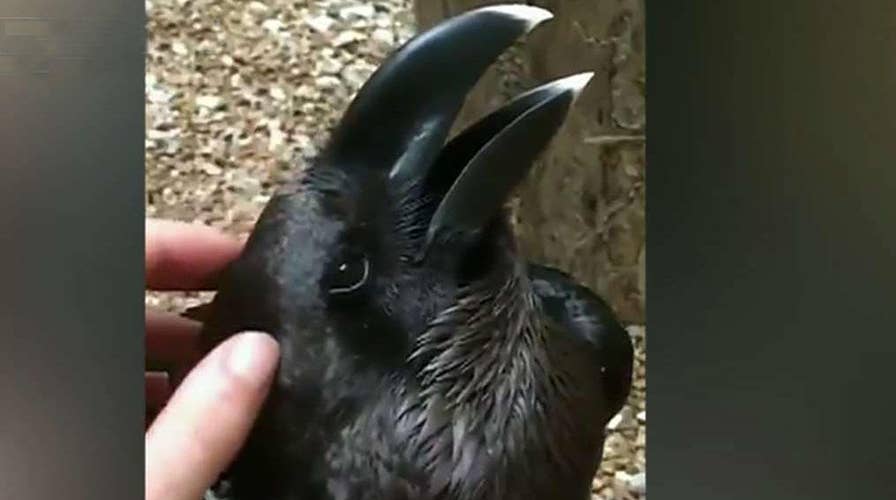Bird or bunny? Optical illusion ruffles feathers online
A video of an animal being pet is the latest optical illusion dividing the Internet.
A colorful optical illusion has divided social media users once more as people debate which animal is actually displayed in the unfinished drawing.
The viral graphic features a blue, purple and green florescent background with spaced-out pink strokes. Most people are split between seeing a donkey or a seal while others report seeing other land or sea creatures.
WHAT YOUR BRAIN REALLY SEES WHEN IT LOOKS AT ‘THE DRESS’: A NEUROSCIENTIST EXPLAINS
British author J.K. Rowling shared the illusion to Twitter on Saturday, March 19, and she confidently sided with team donkey.
Rowling’s tweet received more than 146,400 likes and thousands of comments and retweets, but not everyone agreed the drawing resembles a donkey. Some suggested the image looks like a kangaroo, fish or mermaid.
BIZARRE OPTICAL ILLUSION: IDENTICAL STREET IMAGES GO VIRAL
The same day, English actress Amanda Abbington tweeted that she thinks the drawing is a seal.
Others argued that they see a horse or mule, which are both a part of equidae family (AKA horse family), just like donkeys.
Twitter users who haven’t picked a side have prompted other users to share what they see, including Ana Navarro-Cárdenas – a co-host on "The View."
SEEING ISN'T BELIEVING: MIND-BENDING OPTICAL ILLUSIONS
While the meme tries to suggest that people see the graphic differently based on whether they’re using the right or left side of their brains, theories like these haven’t been proven.
An article from Harvard Health Publishing in 2019 reported that personality traits like logic and creativity aren’t restricted to one side of the brain.
CLICK HERE TO GET THE FOX NEWS APP
The creator of the colorful meme is not known, but the drawing is a recreated illustration from an image that was used in a research study from 2006, which was titled "See What You Want to See: Motivational Influences on Visual Perceptions."
On behalf of Cornell University, social psychologists Emily Balcetis and David Dunning published their findings in the Journal of Personality and Social Psychology and wrote that "people's motivational states—their wishes and preferences—influence their processing of visual stimuli."
The figure they used to test study participants' perception was called the "ambiguous horse-seal" and was created in 1968 by the Psychonomics Society.
FOLLOW US ON FACEBOOK FOR MORE FOX LIFESTYLE NEWS
It was purposely designed to be vague, so researchers could see how people interpret the image. But, if you’d like to settle the debate with the people you know, a horse or seal are acceptable answers, according to the study figure’s assigned name.


